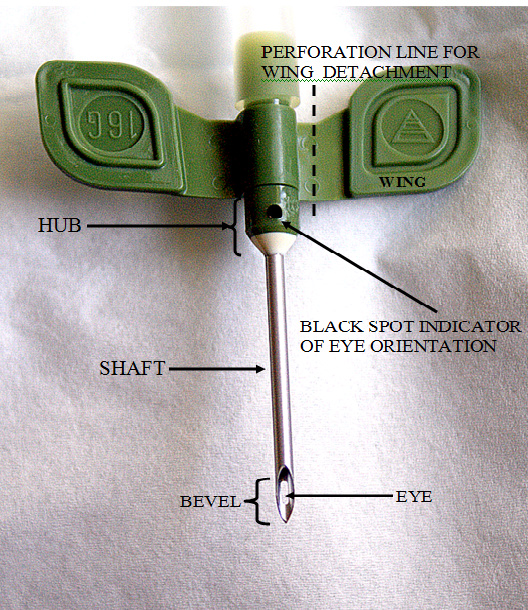The beauty and precision of the cutting edge device affording access to our circulatory system’s interior is worth examining, for in excess of 300 times per year self-cannulators will use one to penetrate skin and blood vessel. Here there is room for evolution of individual technique and style, enhancing home dialyser’s sense of ownership of their life-preserving modality.
The wings, handy for secure grip, flexibility, achieving different angles for entry and for securing the needle are not preferred by everybody. Conveniently they may be readily removed by twisting at the line of perforation. Rotating hub needles allow rotation of the bevel without moving the needle wings.
Orientation of the bevel is invisible once embedded in the access. The black dot on the hub however is aligned with the bevel allowing adjustments at the start of dialysis.
The shallow angle and keen edges of the bevel allow for clean, incisive entry. Once in position and with blood flowing, the back eye maximizes flow and prevents suction of the needle to the vessel endothelium (inner lining). In the case of a superficially positioned needle (i.e. close to or touching the endothelium), the back eye will still allow blood to enter or escape through the bevel.
A range of sharps in terms of diameter, tubing length and shaft length caters for most of us, - all the way from those braving pump speeds in excess of 400 (widest diameter needle) to those with delicate, contorted accesses requiring perhaps a short shafted G17 (narrow gauge).
